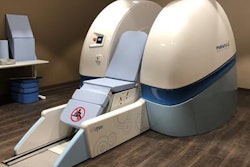Monday, December 2 | 3:20 p.m.-3:30 p.m. | SSE03-03 | Room E350
Setting both the upper and lower velocity limits for 4D flow MRI may improve the accuracy of velocity measurements in patients with complex congenital heart disease (CHD), according to this study to be presented on Monday."Blood flow assessment using 4D flow MRI has helped the understanding of many physiopathological issues in the follow-up of patients with complex grown-up congenital heart disease," Dr. Arshid Azarine from Saint Joseph Hospital in Paris told AuntMinnie.com.
However, 4D flow MRI sequences are currently based on a single predefined velocity encoding, which is a parameter that clinicians use to determine specific ranges for blood flow velocity in a particular vessel, Azarine continued. This approach restricts 4D flow MRI analysis to a narrow window of blood flow velocity, often requiring clinicians to perform multiple MRI sequences to obtain a more comprehensive assessment of blood flow.
In their study, the researchers from France explored the feasibility of performing 4D flow MRI using two different velocity encodings in a single scan. They tested this dual-velocity encoding strategy on 10 young adults who had undergone surgery for complex CHD and required follow-up imaging.
The patients underwent gadolinium-enhanced cardiac MRI followed by a dual-velocity encoding 4D flow MRI sequence, with a high-velocity encoding set at 300 cm/sec and a low-velocity encoding at 100 cm/sec. It took roughly 12 minutes to complete the scan.
Analysis of the data revealed that the dual-velocity method reliably incorporated the low- and high-velocity fields, generating accurate velocity measurements for the vena cava. Dual-velocity 4D flow MRI provided high- and low-velocity measurements simultaneously, completing in one scan what the standard approach required two scans to do -- ultimately reducing acquisition time for this task by approximately 25%.


.fFmgij6Hin.png?auto=compress%2Cformat&fit=crop&h=100&q=70&w=100)





.fFmgij6Hin.png?auto=compress%2Cformat&fit=crop&h=167&q=70&w=250)











